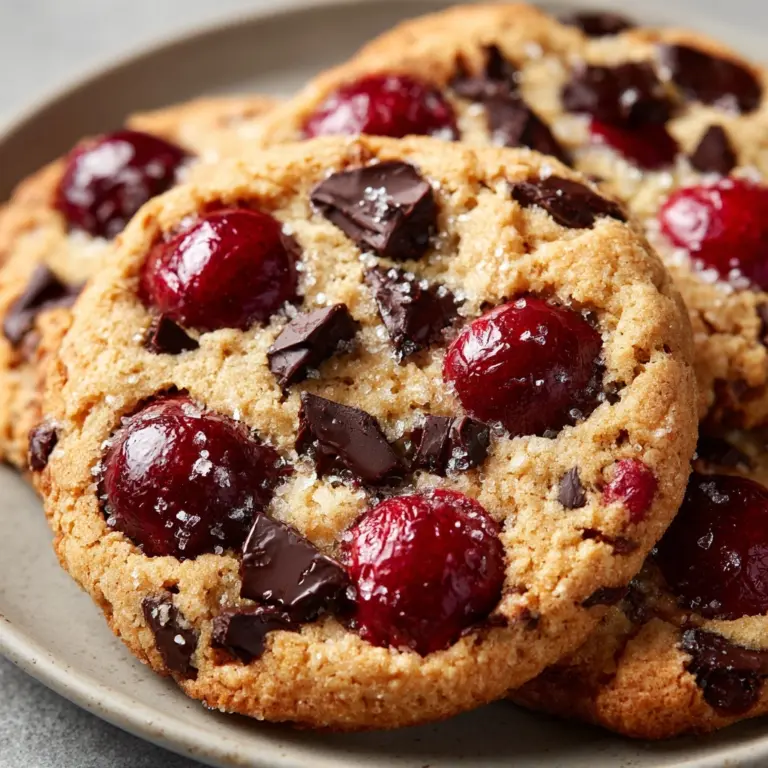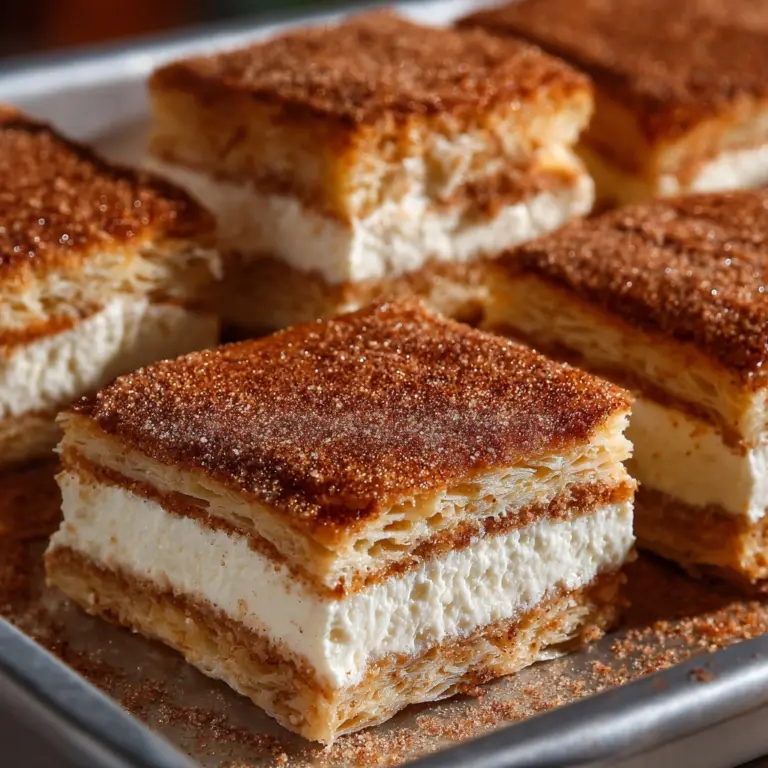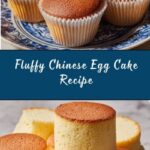Chinese Egg Cake Recipe
There’s something wonderfully nostalgic and comforting about Chinese Egg Cake—a dessert that instantly transports you to childhood bakeries bustling with the scent of freshly baked treats. With its cloud-like texture, golden hue, and gentle sweetness, this cake is a celebration of simple ingredients and masterful technique. Whether enjoyed with a steamy pot of jasmine tea or as a lunchbox surprise, Chinese Egg Cake delivers joy in every bite, inviting you to savor the art of old-school baking in your very own kitchen.

Ingredients You’ll Need
What makes Chinese Egg Cake such a beloved classic? Its straightforward ingredients, each playing an essential role in creating that signature airy sponge. These are kitchen staples, but together, they transform into something magical. Here’s how each one helps bring this cake to life:
- Eggs: The heart and soul of Chinese Egg Cake, eggs provide structure, rich flavor, and rise—no need for baking powder or soda!
- Granulated Sugar: Adds the perfect amount of sweetness while helping to stabilize the beaten eggs for that lofty volume.
- Cake Flour: Creates a soft, tender crumb; be sure to sift for an ultra-light texture.
- Salt: Just a pinch balances the sweetness and brightens the flavors.
- Vanilla Extract (optional): For a subtle fragrance and warmth, a tiny splash elevates the aroma.
- Milk (optional): A small amount lends extra moisture, especially if you like your cake extra soft.
- Vegetable Oil (optional): A spoonful ensures the cake stays moist for days—especially wonderful in dryer climates.
How to Make Chinese Egg Cake
Step 1: Prep Your Pan and Oven
Start by preheating your oven to 350°F (175°C). Line an 8-inch round cake pan or muffin tins with parchment paper to ensure easy removal later. This crucial prep step means your beautiful sponge won’t stick, letting you enjoy every fluffy bite instead of wrestling with crumbs left behind.
Step 2: Whip Those Eggs Like a Pro
Place your room-temperature eggs in a large mixing bowl. Using an electric mixer on high speed, beat them for 5–6 minutes. You’re aiming for a mixture that’s pale, thick, and tripled in volume—a true sign that enough air has been incorporated. This step is the secret behind the famous, airy lift of Chinese Egg Cake. Don’t cut corners here; allow the eggs to work their magic!
Step 3: Gradually Add Sugar and Vanilla
With the mixer still running, begin adding your granulated sugar gradually, allowing each sprinkle to fully dissolve before the next. If you choose to use vanilla extract, add it now for a gentle aromatic boost. This helps stabilize the whipped eggs and ensures the sweet notes are perfectly distributed throughout your cake.
Step 4: Fold in the Flour and Salt
Sift the cake flour and salt together, then add them into the egg mixture in three additions. Use a spatula and adopt gentle folding motions—think sweeping from the edge to the center, turning the bowl as you go. Patience pays off here, keeping the batter airy and light. Over-mixing is the enemy of fluffiness, so just blend until you see no more dry flour.
Step 5: Add Milk and Oil (Optional)
If you like a slightly moister cake, carefully fold in the milk and oil at this stage. Take care not to deflate all the precious air you whipped in—the lighter your touch, the better the crumb. This tweak can give Chinese Egg Cake an even more delicate, melt-in-the-mouth finish.
Step 6: Fill the Pan and Smooth the Top
Pour your batter into the prepared cake pan, using a spatula to gently smooth the surface. To get rid of any large bubbles (which can create uneven holes), tap the pan once or twice on the countertop. This final detail guarantees an even, fine crumb throughout.
Step 7: Bake to Golden Perfection
Bake in the center of the oven for 25–30 minutes, or 18–20 minutes for mini cakes or cupcakes. The cake should turn a lovely golden color, and a toothpick inserted in the center should come out clean. The intoxicatingly warm aroma is your signal that something magical is about to emerge from your oven.
Step 8: Cool and Release
Allow your Chinese Egg Cake to cool in the pan for about 10 minutes—this helps it set and makes removal easier. Then, transfer it to a wire rack to cool completely, letting the texture become even lighter as it settles. Don’t skip the cooling step, as it ensures perfect slices every time.
How to Serve Chinese Egg Cake

Garnishes
The classic way to serve Chinese Egg Cake is plain, letting its pure flavor and airy texture shine. For a subtle flourish, dust lightly with powdered sugar or garnish with delicate berries. If you’re feeling extra fancy, a sprig of mint or some toasted coconut flakes can turn a humble slice into a showstopper, especially for parties or holidays.
Side Dishes
This cake pairs beautifully with a freshly brewed cup of jasmine or oolong tea, balancing the softness of the crumb with a touch of fragrant warmth. You can also serve it beside fresh fruit or a dollop of lightly sweetened whipped cream—both add freshness and complement its gentle sweetness. For a fuller spread, consider pairing with savory dim sum for that nostalgic Chinese tea house experience.
Creative Ways to Present
Besides slicing into neat wedges or pillowy cupcakes, try cutting the cake into finger-sized cubes for elegant tea party platters. Layer cubes with seasonal fruit and lightly whipped cream for a trifle-inspired twist. You can also turn leftover Chinese Egg Cake into dreamy French toast for a brunch treat that’ll surprise and delight everyone at your table.
Make Ahead and Storage
Storing Leftovers
Chinese Egg Cake keeps wonderfully well at room temperature if kept in an airtight container. It will stay moist and fluffy for two to three days—perfect for nibbling as a snack or breakfast treat. If your kitchen is warm or humid, refrigerate the cake to maintain freshness, but bring to room temperature before serving for best texture.
Freezing
For longer storage, wrap cooled slices or whole cakes tightly in plastic wrap, then slide into a freezer-safe bag or container. They can be frozen for up to a month. When you’re ready to enjoy, thaw the cake overnight in the fridge or for a few hours on the counter and it’ll taste just as lovely as the day you baked it.
Reheating
If your Chinese Egg Cake feels a little chilled or dense from storage, simply warm slices in the microwave for 10–15 seconds or in a 300°F oven for about five minutes. This revives the soft, airy crumb and coaxes out its gentle vanilla aroma, making every bite feel like it’s fresh from the oven.
FAQs
Why did my Chinese Egg Cake collapse after baking?
The most common reason is under-whipping the eggs or over-mixing the batter, which lets precious air escape. Stick closely to the mixing instructions and fold gently to help your cake maintain its height.
Can I use all-purpose flour instead of cake flour?
Yes, but the cake will be denser. Cake flour’s low protein content helps create that characteristic light, fluffy crumb. If you must use all-purpose, try substituting two tablespoons of each cup with cornstarch to lighten it a bit.
Is Chinese Egg Cake gluten-free?
Traditionally, no, since it’s made with wheat-based cake flour. However, you can experiment with a good-quality gluten-free cake flour blend for a similar effect—just keep in mind texture may vary slightly.
Why is my cake not as fluffy as bakery versions?
Bakeries often use high-powered mixers or steam ovens to maximize volume. At home, focus on thoroughly whipping the eggs and folding carefully. Even without professional equipment, you can get impressively fluffy results with patience and technique.
Can I make Chinese Egg Cake without a mixer?
While a mixer makes whipping eggs much faster, you can do it by hand with a sturdy whisk (and some muscle!). It’ll take longer, but it’s definitely possible—just be sure to whip until the eggs are very pale and tripled in volume for that signature lift.
Final Thoughts
If you’re looking to bake up a taste of tradition, don’t hesitate to try making Chinese Egg Cake at home. Its lightness, simplicity, and nostalgic flavor make it a star on any table—from family gatherings to everyday tea breaks. Once you experience that first delicate crumb melting on your tongue, you’ll understand why this humble cake is so universally loved. Give it a try and share the joy!
Print
Chinese Egg Cake Recipe
- Total Time: 43 minutes
- Yield: 8 slices or 12 mini cakes 1x
- Diet: Vegetarian
Description
Learn how to make a traditional Chinese Egg Cake, a light and fluffy dessert that’s perfect with tea. This recipe yields a moist and delicate cake with a hint of sweetness.
Ingredients
Egg Cake Ingredients:
- 4 large eggs (room temperature)
- 1/2 cup granulated sugar
- 1 cup cake flour (sifted)
- 1/4 teaspoon salt
- 1/4 teaspoon vanilla extract (optional)
- 1 tablespoon milk (optional)
- 1 tablespoon vegetable oil (optional, for a moister texture)
Instructions
- Preheat the Oven: Preheat oven to 350°F and line an 8-inch round cake pan or muffin tins with parchment paper.
- Beat the Eggs: In a large mixing bowl, beat the eggs on high speed for 5–6 minutes until thick, pale, and tripled in volume.
- Add Sugar and Flavorings: Gradually add the sugar while beating, then fold in vanilla extract if using.
- Combine Dry Ingredients: Gently fold in the sifted cake flour and salt in three additions.
- Optional Additions: Fold in milk and oil if desired for a softer crumb.
- Bake: Pour the batter into the pan, tap to release air bubbles, then bake for 25–30 minutes (or 18–20 minutes for cupcakes) until golden and a toothpick comes out clean.
- Cool and Serve: Let the cake cool in the pan before transferring to a wire rack to cool completely.
Notes
- Traditional Chinese egg cake (鸡蛋糕) is light and fluffy, with no leavening agents—only air beaten into the eggs.
- Avoid overmixing the flour for the best texture.
- This cake is mildly sweet and pairs wonderfully with tea.
- Prep Time: 15 minutes
- Cook Time: 28 minutes
- Category: Dessert
- Method: Baking
- Cuisine: Chinese
Nutrition
- Serving Size: 1 slice
- Calories: 120
- Sugar: 10g
- Sodium: 80mg
- Fat: 3g
- Saturated Fat: 1g
- Unsaturated Fat: 2g
- Trans Fat: 0g
- Carbohydrates: 18g
- Fiber: 0g
- Protein: 4g
- Cholesterol: 90mg






